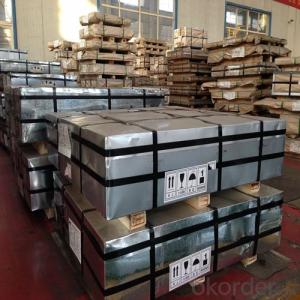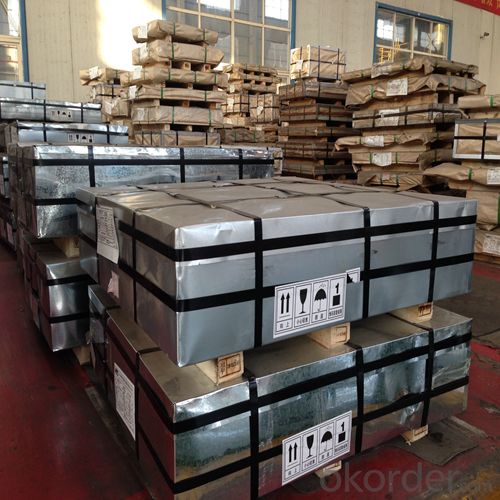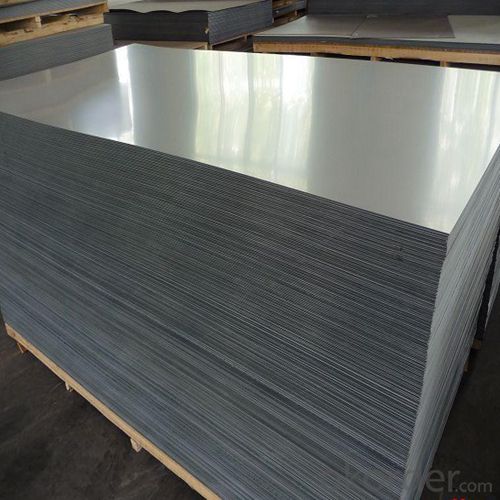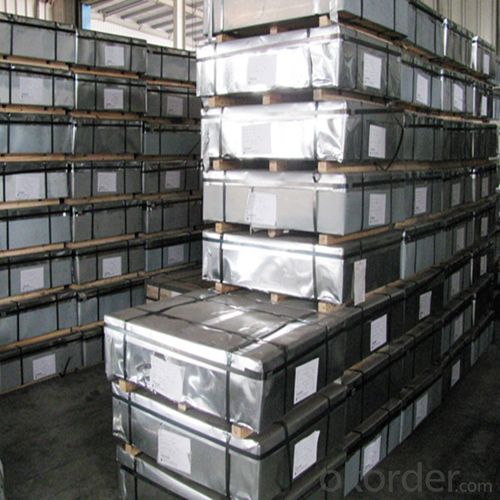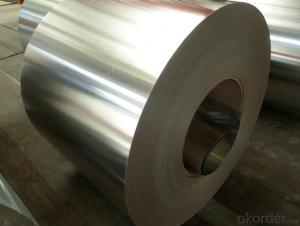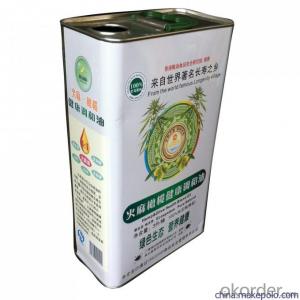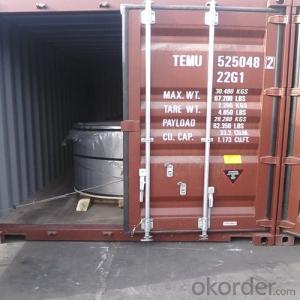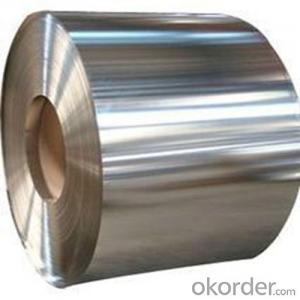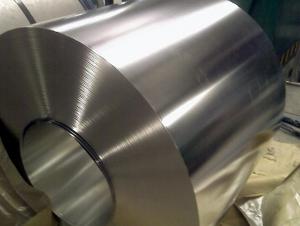Prime Electrolytic Prime ETP Tinplate for Food Metal Packaging
- Loading Port:
- Tianjin
- Payment Terms:
- TT OR LC
- Min Order Qty:
- 25 m.t
- Supply Capability:
- 30000 m.t/month
OKorder Service Pledge
OKorder Financial Service
You Might Also Like
1.Structure of Prime Electrolytic Prime ETP Tinplate for Food Metal Packaging Description
Electrolytic Tin Plate Coils and Sheets for Foods Metal Packaging, is one thin steel sheet with a coating of tin applied by electrolytic deposition. Tinplate made by this process is essentially a sandwich in which the central core is strip steel. This core is cleaned in a pickling solution and then fed through tanks containing electrolyte, where tin is deposited on both sides. As the strip passes between high-frequency electric induction coils, it is heated so that the tin coating melts and flows to form a lustrous coat.
2.Main Features of the Prime Electrolytic Prime ETP Tinplate for Food Metal Packaging
Appearance – Electrolytic Tin Plate is characterized by its beautiful metallic luster. Products with various kinds of surface roughness are produced by selecting the surface finish of the substrate steel sheet.
Paintability and printability – Electrolytic Tin Plates have excellent paintability and printability. Printing is beautifully finished using various lacquers and inks.
Formability and strength – Electrolytic Tin Plates have got very good formability and strength. By selecting a proper temper grade, appropriate formability is obtained for different applications as well as the required strength after forming.
Corrosion resistance – Tinplate has got good corrosion resistance. By selecting a proper coating weight, appropriate corrosion resistance is obtained against container contents. Coated items should meet 24 hour 5 % salt spray requirement.
Solderability and weldability – Electrolytic Tin Plates can be joined both by soldering or welding. These properties of tinplate are used for making various types of cans.
Hygienic – Tin coating provides good and non toxic barrier properties to protect food products from impurities, bacteria, moisture, light and odours.
Safe – Tinplate being low weight and high strength makes food cans easy to ship and transport.
Eco friendly – Tinplate offers 100 % recyclability.
Tin is not good for low temperature applications since it changes structure and loses adhesion when exposed to temperatures below – 40 deg C.
3.Prime Electrolytic Prime ETP Tinplate for Food Metal Packaging Images
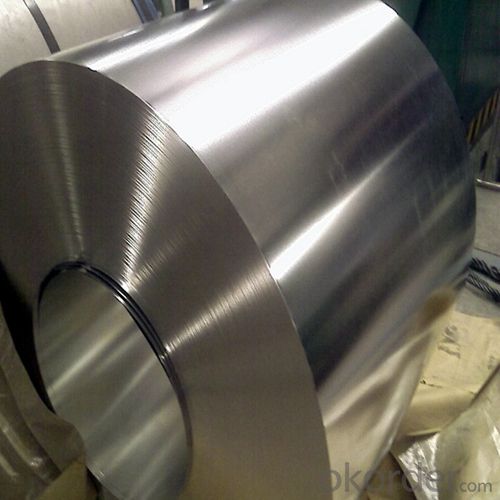
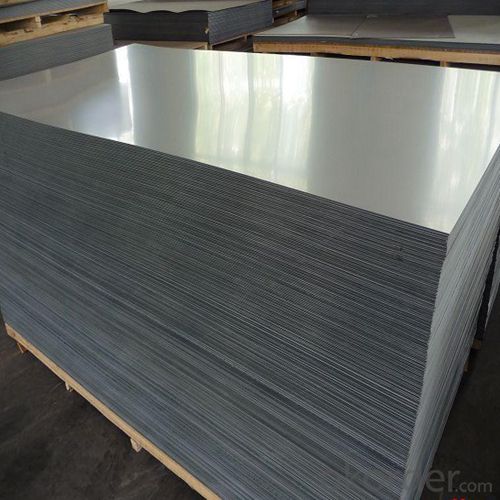
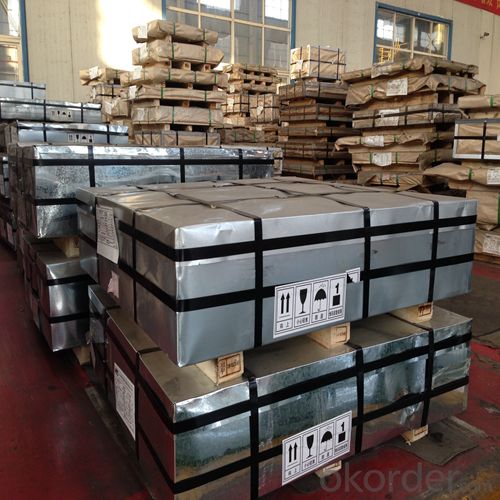
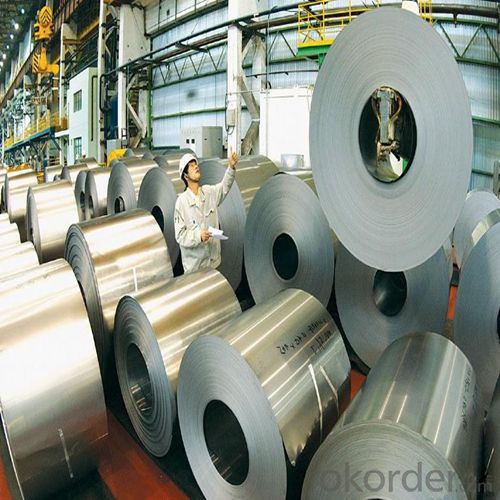
4.Prime Electrolytic Prime ETP Tinplate for Food Metal Packaging Specification
Standard | ISO 11949 -1995, GB/T2520-2000,JIS G3303,ASTM A623, BS EN 10202
|
Material | MR,SPCC |
Thickness | 0.15mm - 0.50mm |
Width | 600mm -1150mm |
Temper | T1-T5 |
Annealing | BA & CA |
Coil Inner Diameter | 508mm |
Weight | 6-10 tons/coil 1~1.7 tons/sheets bundle |
Passivation | 311 |
Oil | DOS |
Surface | Finish,bright,stone,matte,silver |
5.FAQ of Electrolytic Tin Plate Coils and Sheets for Foods Metal Packaging
-What your tinplate material is used for ?
Tinplate is widely used for the packaging of products. Such as food cans,
beverage cans, pet cans, closures, general line cans and so on.
Printed Tinplate is offered!!
-How to place .an order or contact you ?
Please send us Email. we will give you a quick response in seconds .
- How is your quality ?
All our quality is prime even the secondary quality . We have many years experience
In this field with serious quality control standard . Advanced equipment, We welcome your visit to our factory .
- Q: How is tinplate affected by exposure to oxygen?
- Tinplate is generally not affected by exposure to oxygen, as it forms a protective layer of tin oxide on its surface that prevents further oxidation.
- Q: What are the main factors influencing the profitability of tinplate manufacturers?
- The main factors influencing the profitability of tinplate manufacturers are the cost of raw materials, such as tin and steel, as well as the price at which the finished tinplate products can be sold. Other factors include production efficiency, economies of scale, competition within the industry, and the overall demand for tinplate in various sectors like packaging, construction, and automotive. Additionally, factors like government regulations, technological advancements, and environmental sustainability practices can also impact the profitability of tinplate manufacturers.
- Q: How does tinplate packaging protect against moisture and oxygen?
- Tinplate packaging protects against moisture and oxygen due to its unique properties. The tin coating acts as a barrier, preventing the penetration of moisture and oxygen into the packaged product. It creates a protective layer that effectively shields the contents from these elements, ensuring their quality and freshness over an extended period of time.
- Q: Can tinplate be used for packaging of perishable goods?
- Yes, tinplate can be used for packaging of perishable goods. Tinplate is a durable and protective material that can provide a barrier against moisture, oxygen, and light, which are factors that can contribute to the spoilage of perishable products. Additionally, tinplate can offer a longer shelf life for perishable goods due to its ability to maintain product quality and prevent contamination.
- Q: What are the different sizes and shapes of tinplate packaging available?
- There are various sizes and shapes of tinplate packaging available, ranging from small tins for individual items such as lip balm or mints, to larger tins for products like cookies or tea. The shapes can also vary, including round, rectangular, or square tins, as well as specialty shapes like heart or star-shaped tins.
- Q: What are the advantages of using tinplate for toys and games?
- One advantage of using tinplate for toys and games is its durability. Tinplate is a strong material that can withstand rough handling and play, making it ideal for toys that are often subjected to wear and tear. Additionally, tinplate is resistant to corrosion, ensuring that the toys remain in good condition even with prolonged exposure to moisture or other environmental factors. Furthermore, tinplate allows for intricate and detailed designs, enhancing the aesthetic appeal of the toys and games. Overall, the use of tinplate in toys and games offers a combination of strength, longevity, and visual appeal, making it a favorable choice for manufacturers and consumers alike.
- Q: How does tinplate packaging contribute to product protection against UV rays?
- Tinplate packaging helps to protect products against UV rays by acting as a barrier, preventing the penetration of harmful ultraviolet light. The reflective properties of tinplate also minimize the absorption of UV radiation, further safeguarding the product from potential damage caused by exposure to sunlight.
- Q: Can tinplate packaging be used for frozen or refrigerated goods?
- Yes, tinplate packaging can be used for frozen or refrigerated goods. Tinplate is a durable and corrosion-resistant material that can withstand low temperatures without compromising the quality and safety of the packaged items. It provides a protective barrier against moisture, light, and oxygen, ensuring the preservation of frozen or refrigerated goods.
- Q: How does tinplate contribute to the protection of pharmaceutical products?
- Tinplate contributes to the protection of pharmaceutical products by providing a reliable and durable packaging material. It offers a protective barrier against moisture, light, and oxygen, helping to preserve the quality and efficacy of pharmaceutical products. Tinplate also ensures the integrity of the packaging, preventing contamination and tampering, thereby ensuring the safety of the products.
- Q: What are the advantages of using tinplate packaging?
- Tinplate packaging offers several advantages including excellent durability, corrosion resistance, and ability to maintain product freshness. It is also easily recyclable, offers enhanced product visibility, and can be customized with attractive designs.
Send your message to us
Prime Electrolytic Prime ETP Tinplate for Food Metal Packaging
- Loading Port:
- Tianjin
- Payment Terms:
- TT OR LC
- Min Order Qty:
- 25 m.t
- Supply Capability:
- 30000 m.t/month
OKorder Service Pledge
OKorder Financial Service
Similar products
Hot products
Hot Searches
Related keywords
